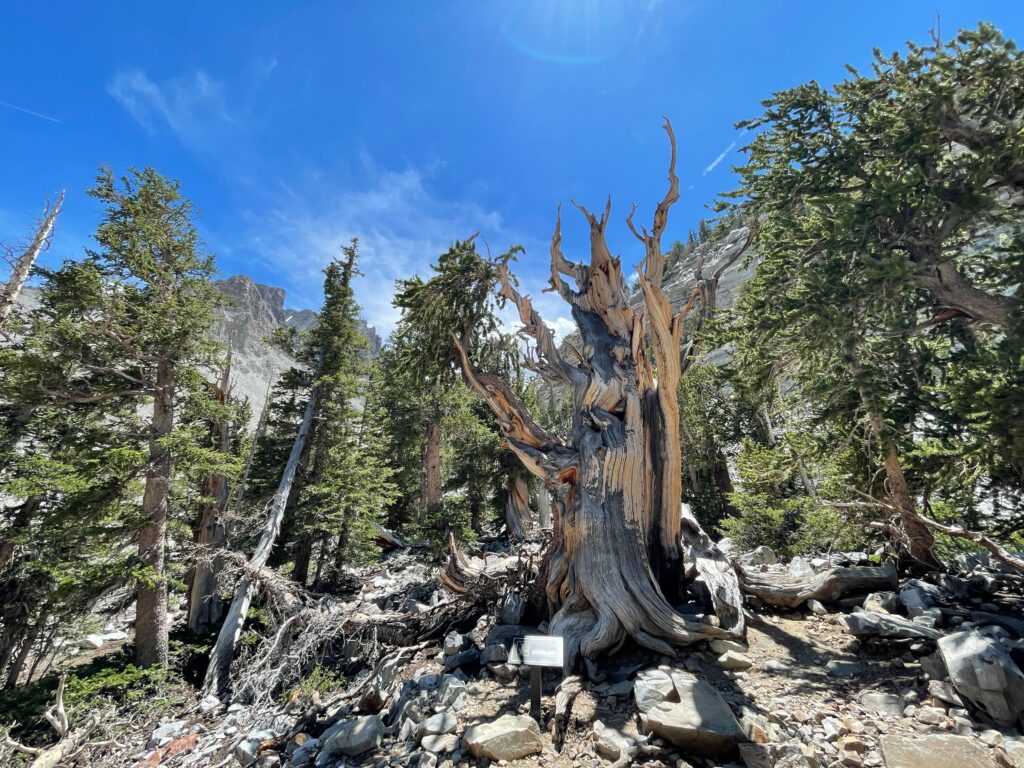Why planting more trees may not be the ‘silver bullet’ to combat extreme heat in Las Vegas

In Las Vegas, the shade from a lush tree can make a world of difference on a scorching summer day in one of the nation’s fastest-warming cities.
Trees intercept the sun’s intense rays, reducing radiant temperatures by up to 30 degrees Fahrenheit.
But do trees always cool the air?
While they do in many places, Las Vegas is an exception, according to a new study from scientists at the Desert Research Institute (DRI).
While trees do help cool the air in more temperate areas, the study shows Las Vegas experiences little daytime cooling from trees.
Relying on simulations using drought tolerant and non-drought tolerant trees, scientists demonstrated that in hot, arid climates such as Las Vegas’, trees provide shade but do little to actually cool the air around them.
“When we go under a tree, we can feel the difference,” according to Juan Henao, who led the study with fellow DRI scientist John Mejia.
That comfortable temperature difference comes from a decrease in solar radiation, not necessarily a decrease in temperature.
“I think one important finding of this research is that air temperature is not the only variable that matters,” he said.
Their research could potentially help inform citywide efforts to reduce extreme urban heat in Las Vegas and other arid cities facing similar battles.
Nevada’s two largest metropolitan areas, Las Vegas and Reno, are widely acknowledged as among the fastest-warming cities in the nation; last year, heat was attributed as the cause of death of more than 500 people in Las Vegas.
Gov. Joe Lombardo signed a bill last month requiring Las Vegas and Reno to develop heat mitigation plans, building off measures the cities already have in place — including a Las Vegas program to plant 60,000 trees by 2050 across downtown, east Las Vegas and the Historic Westside.
“Urban trees are not a silver bullet for cooling our cities, particularly for desert cities like Las Vegas,” Henao said, adding that, “I think there is some consensus, and we confirmed it here, that in hot, arid climates, shade is the most important benefit of trees.”

Water in, water out
Some trees help cool the air by releasing water from their leaves. Known as transpiration, it can cool the surrounding air.
But in extremely dry desert air, many trees will close what are essentially pores in their leaves to conserve water.
Non-drought tolerant trees that are not adapted to extreme heat and dry temperatures keep their pores open in those environments, which adds cooling water to the air around them but leads to water stress for the trees.
Knowing this, Henao and Mejia ran simulations with drought-tolerant Bur oaks and non-drought-tolerant cherry trees.
In the Bur oak simulations, the scientists noted hardly any changes in daytime temperatures, although they did observe temperatures cooling by up to 3 degrees Fahrenheit at night.
When they used cherry trees in their simulations, they found cooling throughout the day and night. But the trees, not adapted for harsh climates such as Las Vegas’, needed three times as much water as the drought-tolerant trees.
And while the study was limited to simulations, it can offer insight to those seeking to help cool down overheated and water-strapped areas such as Las Vegas by showing what types of trees might be best suited for projects and spur consideration of the balance between cooling and water needs.
“To cool the air, [trees] need to release water vapor, and we need to give them enough water to do that,” Henao said. “Any hot, dry city will need to consider these tradeoffs and really do their research to identify the right species for planting efforts.”

In the weeds
Southern Nevada trail construction — Construction of a bicycle and pedestrian trail connecting Summerlin and Red Rock National Conservation Area kicked off with a groundbreaking ceremony last week.
The 19-mile-long Red Rock Legacy Trail will be built in five phases, ultimately connecting the edge of Summerlin in the north to Blue Diamond Road in the south.
The first phase includes a 1-mile-long section connecting West Charleston Boulevard and Sky Vista Drive to the current location of the Red Rock Canyon Marker (North). A parking lot for trail users is being built near the intersection of West Charleston Boulevard and Sky Vista Drive.
Ruby Crest Trail parking challenges — Planning to hike the Ruby Crest Trail outside Elko? Make sure to double check your entrance and exit trailheads.
Road’s End parking area at the end of Lamoille Canyon Road will be closed into early August while it is repaved, and Road’s End Trailhead is also closed. Limited parking is available at the Terraces Picnic area; no roadside parking is allowed. Visitors who plan to hike the Ruby Crest Trail or Island Lake Trails should start at Overland Lake, Colonel Moore, or Green Mountain trailheads.
Nonprofit financial debacle — The Truckee Meadows Parks Foundation has ceased all operations following alleged mismanagement of funds by the organization’s former executive director, Heidi Anderson, who was fired in June, according to an email from the foundation.
The nonprofit group previously oversaw projects such as the conversion of an old golf course in South Reno to a nature study area, preserving some of the last remaining wetlands in the Truckee Meadows.
All programming coordinated by the foundation has been suspended and staff have been laid off, including AmeriCorps partnerships. The organization anticipates losing its nonprofit status later this year and is preparing for formal dissolution.

Here’s what else I’m reading (and listening to) this week:
Looking to visit a national park? President Donald Trump orders entry fee and diversity, equity and inclusion changes, shares USA Today
U.S. funding cuts threaten academic science jobs at all levels, from Science
Tahoe homeowner ‘blindsided’ by settlement with NV Energy, the Nevada Current reports
California moves closer to conserving 30 percent of its land and 30 percent of its water as threats to public lands loom, the Los Angeles Times writes

ICYMI:
Questions over water rights could halt construction at Thacker Pass lithium mine
Limos, liquor, hotels among NV Energy’s millions in ‘inappropriate charges’ IDed by watchdog
Nevada forestry division recovers millions in out-of-state firefighting costs
Study to monitor fireworks’ effect on Tahoe upended when fireworks-laden barge sinks
North Tahoe ski resort project scaled back. Here’s why advocates say it’s such a big deal
A closer look:

Between 6 a.m. July 4 and 4 a.m. July 5, Las Vegas Fire and Rescue responded to calls for two burn injuries, 116 outside fires and seven building fires!
